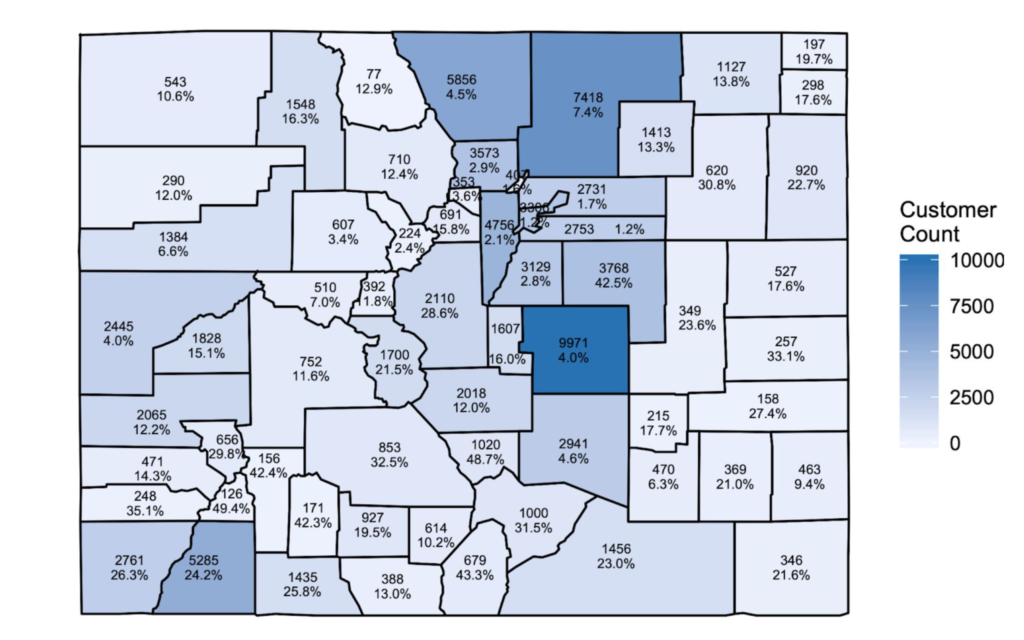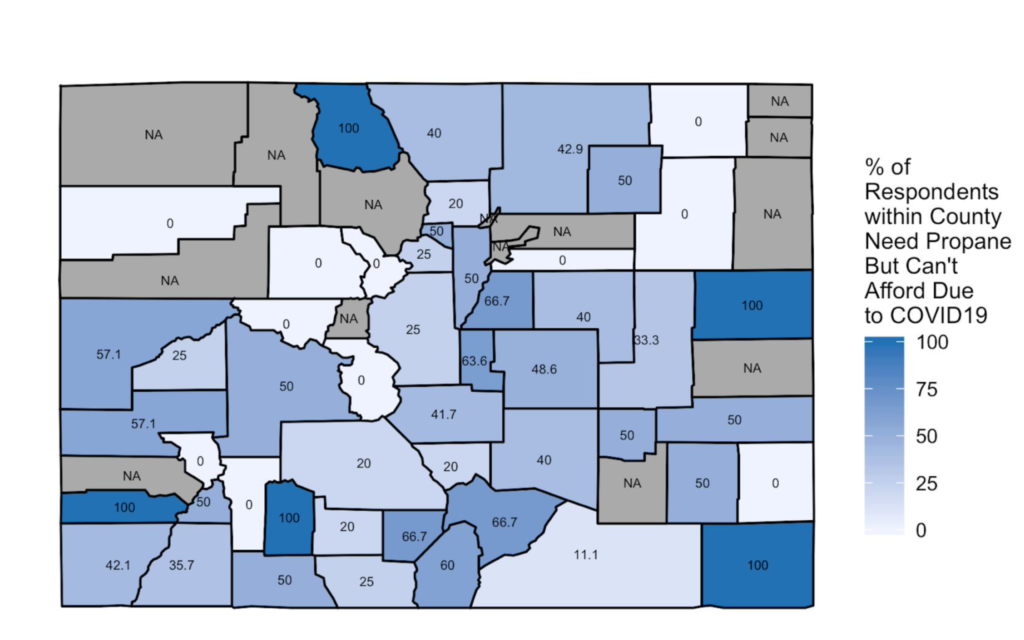Colorado State University engineering researchers conducted a survey of propane consumers for the state that led to government-mandated payment plans during the COVID-19 crisis.
On April 30, Gov. Polis issued Executive Order D 2020 051 with a directive taken from the results of research from two CSU Systems Engineering professors. The order directed propane companies to develop payment plans for customers who cannot afford to refill their propane tanks, and to inform customers about the Low-Income Energy Assistance Program (LEAP).

The COVID-19 pandemic has resulted in many tough choices for Coloradans, especially when it comes to bills.
About 95% of Colorado’s 2.1 million homes are connected to infrastructure allowing them to receive electricity or natural gas in their home. The power needs of these residents are provided by a public utility company.
However, roughly 100,000 homes in Colorado are not connected to the natural gas utility so they rely on propane trucked to them to heat their home.
Understanding problem scope
Public utilities have a special relationship with the public, said Tom Bradley, professor and department head in systems engineering. In exchange for residents of Colorado granting the gas utility a monopoly, they are regulated by a public utility commission. The governor and public utility commission can limit the activities of utilities to demand that in the event of disaster, public utilities have to provide electricity.

“There is no monopoly on propane delivery, and propane is not a utility,” Bradley said. “There is no requirement for propane companies to come up to your home and deliver propane, even in a pandemic.”
Due to the nature of the propane business, it is only financially feasible to deliver at least 50 gallons of propane to a residence. This can require that customers purchase hundreds of dollars of propane at a time when they fill their residential tank.
Due to economic ramifications from the COVID-19 pandemic, Colorado Gov. Jared Polis was concerned that residents who depend on propane to heat their homes and water and as cooking fuel would not be able to afford it.
Polis asked the Colorado Energy Office to determine the potential scale of the problem.
Mapping the problem
The Colorado Energy Office reached out to Bradley for help who then recruited Erika Miller, assistant professor in systems engineering.
Propane use within individual counties in Colorado varies widely from almost 50 percent in Archuleta County to just over 1 percent in Denver County. In general, Colorado’s less densely populated counties have a greater number of homes that rely on propane.
To understand the scope of the problem, Miller and Bradley surveyed two potentially impacted groups. The first, propane marketers who deliver propane and the second, propane customers who had previously participated in LEAP.
“They stepped right in and we did it in a really short time period,” said Maria Eisemann, transportation policy analyst at Colorado Energy Office. “We worked at night and on weekends and [Bradley and Miller] worked right there with us.”
They received 31 responses from propane marketers and 371 responses from propane customers.
Nearly all counties were represented in customer responses: 52 of 64 counties.
The CSU results found that due to the lagging nature of propane orders, propane marketers had not noticed a significant negative impact to their businesses from the COVID-19 pandemic.
“Propane marketers said in early April it hadn’t really hit yet, but expected in a couple of weeks it probably would,” Bradley said. “It’s a long-term problem because of the delay in usage.”
At the time of the survey, marketers did identify 1,000-2,000 customers that had already expressed trouble purchasing propane.
Faced with heating home or upgrading internet
Over half of the customer responses indicated a total household income of less than $25,000. Nearly 60 percent of responses indicated having their employment directly impacted as a result of COVID-19. This included lost jobs, being temporarily laid off, and reductions in income.
Almost 40 percent of respondents said that they would need propane before the end of the heating season, but could not afford to purchase their propane due to COVID-19 income loss. The heating season can be as late as July in some higher-elevation counties.

“A lot of customers responded that maybe they would have had enough propane, but because everyone in their family is staying home they have been using more heating,” Miller said. “They also had to pay more to increase their broadband service to help their kids with schooling.”
Miller and Bradley’s report of findings for the Colorado Energy Office was shared with Gov. Polis.
“We were able to get the voice of the average Coloradan in front of the governor,” Bradley said. “It is vital to communicate the unique energy problems that residents in these counties are experiencing due to the COVID-19 pandemic.”
The Colorado Energy Office had never done an in-depth study of who uses propane in Colorado. Some of the data from this study has already been used by other departments within CEO.
“[Bradley and Miller] did a service for some of our lower-income individuals in the state and they stepped up with zero hesitation,” Eisemann said. “CSU helped out and was there for folks of Colorado when we needed them.”
_________
Resources for those needing assistance with paying utilities:
Low Income Energy Assistance Program (LEAP) provides home heating assistance to low income residents across Colorado.
Energy Outreach Colorado (EOC) is a statewide nonprofit which has been in existence for over 30 years and provides utility payment assistance, energy efficiency upgrades for single and multi-family homes, health and safety audits, and furnace repairs and/or replacements.